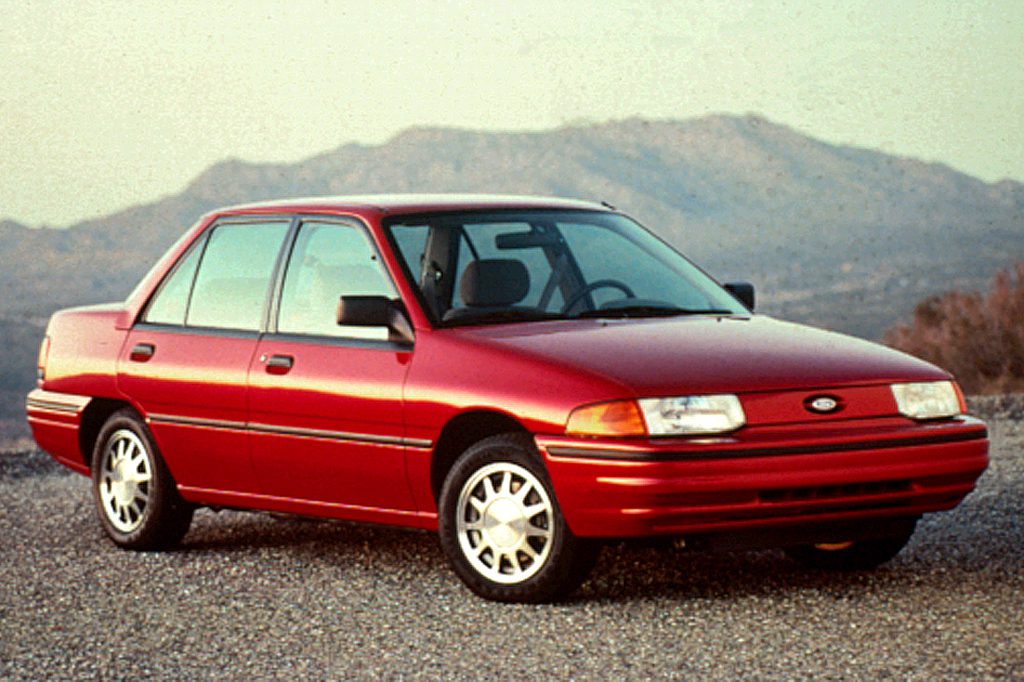| Compact car; Built in USA, Mexico |
|
|
| Good condition price range: $1,000 – $1,800* |

1992 Ford Escort 4-door sedan

1991 Ford Escort LX 4-door wagon

1991 Ford Escort GT 2-door hatchback

1993 Ford Escort LX Sport 2-door hatchback

1994 Ford Escort GT interior
| Pros: |
|
| Cons: |
|
With Escort you get plenty of practical value. Though the Escort can’t match a Honda Civic or Toyota Corolla for refinement, it does give the impression of true quality in the subcompact field.
Overview
For 1991, this popular subcompact was given a substantial reworking. Wheelbase grew four inches on a front-drive platform derived from the Mazda 323/Protege. Body styles were the same as before: 2- and 4-door hatchbacks, plus a 4-door station wagon. (The similar Mercury Tracer came as a 4-door notchback sedan or a wagon.) Low-end Pony and step-up LX Escorts kept the 1.9-liter Ford 4-cylinder engine from the prior generation. The GT 3-door hatchback got a smaller dual-cam engine that whipped up 127 horsepower. All Escorts had motorized front shoulder belts.
Yearly Updates
| 1992 Escort Escort added two 4-door notchback sedans, a regular LX plus an LX-E with the GT’s engine. The LX-E had GT-style seat/door trim, 4-wheel disc brakes, and a sport suspension. |
| 1993 Escort Escorts went on sale early this season, showing only minor styling revisions. All except the GT got a slightly restyled grille. The LX gained body color bumpers; GTs, new wheels and spoilers. |
| 1994 Escort Antilock braking became available on the GT, and all models added a driver-side airbag. Front passengers stuck with the motorized seatbelt. |
| 1995 Escort Dual airbags were installed, but Escorts retained motorized seatbelts anyway. A new instrument panel held revised climate controls, and the optional air conditioner was more powerful. An integrated child safety seat became available. |
| 1996 Escort Seatbelts added an automatic locking retractor that eliminated the need for locking clips with a conventional child seat. A redesigned Escort went on sale in late May as an early 1997 model. |
